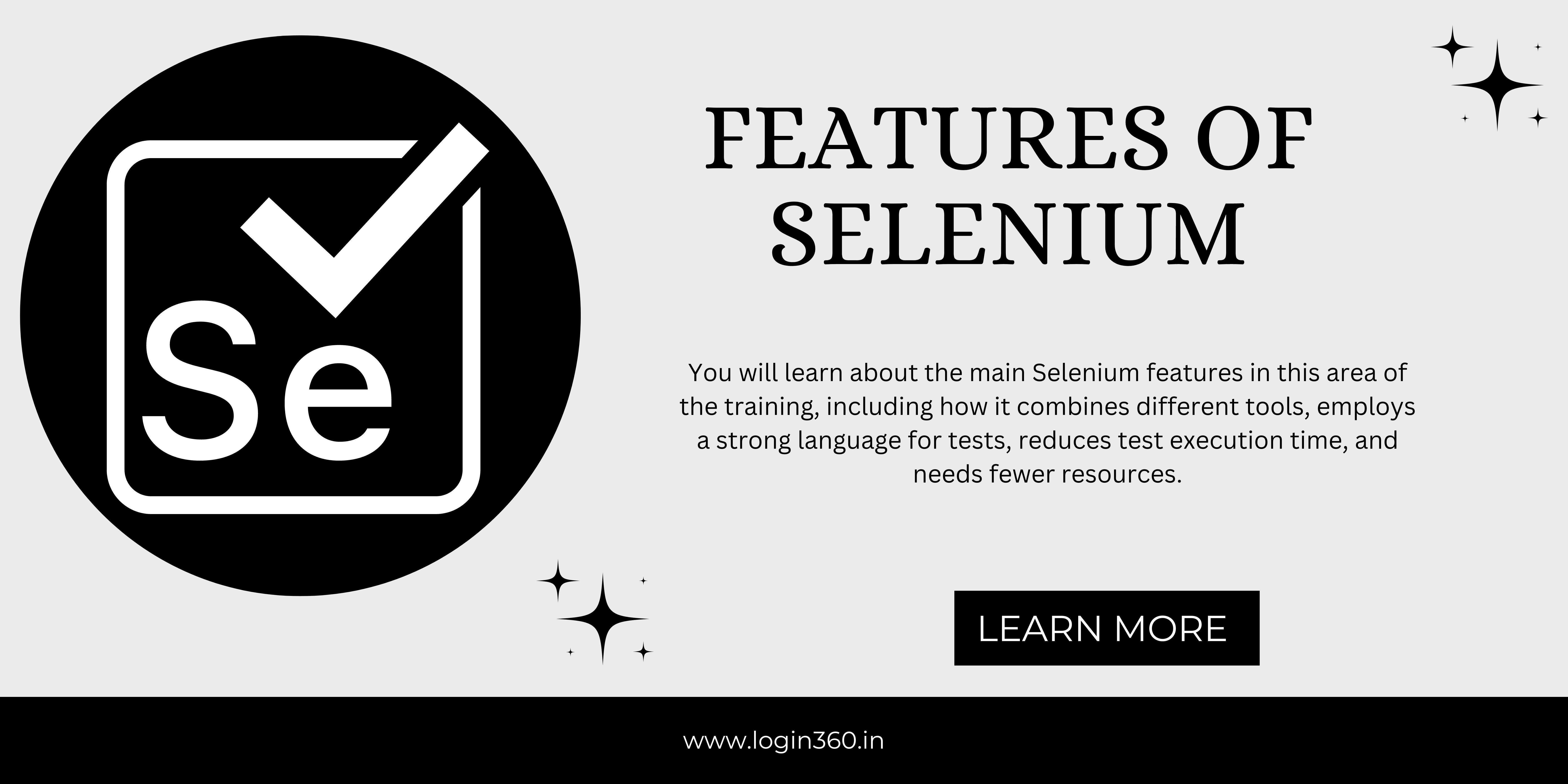You will learn about the main Selenium features in this area of the training, including how it combines different tools, employs a strong language for tests, reduces test execution time, and needs fewer resources. You will also discover some of its disadvantages, such as the need for highly qualified employees and the inadequacy of its solutions.
What is Selenium?
Selenium is a free (open-source) automated testing framework used to evaluate web applications across many browsers and platforms. Java, C#, and Python are just a few of the programming languages you can use to create Selenium Test Scripts. The term "Selenium testing" refers to testing done using the Selenium testing tool.
In addition to being a single tool, Selenium Software is a collection of linked applications, each of which has a specific function in the Selenium QA testing requirements of an organization.
Selenium Features
Let's examine each of Selenium's qualities separately.
1. Multi-Browser Support
Similar to how a real user would, Selenium can interact with web apps and web elements in a browser. Selenium achieves this by making use of a native support that the browser already has, which executes direct calls without the need for any additional hardware or software. Selenium supports a variety of browsers, including Chrome, Safari, IE, Opera, Edge, and Firefox.
2. Performance and Speed
WebDriver is a special Selenium component that is used for automating web app testing. Compared to other tools, this one can perform test cases faster. Since it can communicate directly with the browser, there is no need for middlemen like the server.
3. Multi-Language Compatibility
Selenium supports a wide range of programming languages, including PHP, Java, Python, JavaScript, Perl, Ruby, and many more. Any programming language that you are comfortable with can be used to write automation test scripts. Using switch statements, conditional statements, or decision-making statements will also help your automation test script. After finishing this step, your test script will be able to handle any circumstance.
4. Easy Identification and Use of Web Elements
Selenium makes it simple to recognize web components on web apps with the help of its numerous locators. As a result, it is much easier to implement the items in the test automation suite. You can add a variety of Selenium IDE extensions to your website.
5. Reusability and Extras
All of the scripts were written in Selenium to allow for browser compatibility testing. The additional plugins help to broaden the area of application testing because they can be customized.
6. Selenium WebDrivers – Classes and Methods
WebDriver is one important tool Selenium offers. In-depth discussion is given to a number of potential automated testing problems. It also makes it easier for testers to navigate through challenging site elements like radio buttons, dropdown menus, alarms, etc. by using dynamic locators.
7. Dynamic Web Elements
Selenium can easily handle dynamic web elements. It employs some of the following methods to achieve that:
- A partial string can contain an element that can be found using the Contains() method.
- Absolute XPath(): This XPath can easily manage dynamic web components. Starting with the root node, it contains a complete set of paths for web UI automation.
- The function StartsWith() assists in discovering a related attribute to a dynamic web element by matching or locating the initial text.
8. Combination of Tool and DSL
Selenium is the best tool and DSL combination for doing different types of tests (Domain Specific Language). The tests that you conduct using the browser can be recorded. Support is provided for various web browsers like Internet Explorer, Safari, Firefox, Chrome, and others.
9. Portability (Ability to work with different Operating Systems)
Selene is portable software. It is compatible with a number of operating systems, including Linux, Mac, UNIX, and Windows.
10. Uses a rich language for tests
Selenium uses DSL for testing web applications. This language, which is simple to learn, has 200 commands.
11. Open Source
Selenium is open-source software. Downloading Selenium is made simple on the official website.
12. Take less time to execute a test
Selenium reduces the amount of time it takes to run a test. This makes for a quicker and more trustworthy execution.
Conclusion
In this blog post on Selenium Capabilities, you learned that Selenium is packed with features that assist testers in running more reliable and effective tests. Different operating systems and browsers are supported. Selenium can be installed without even requiring a server. It has the ability to speak directly with the browser.
